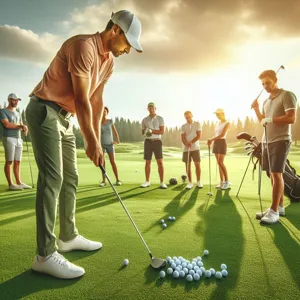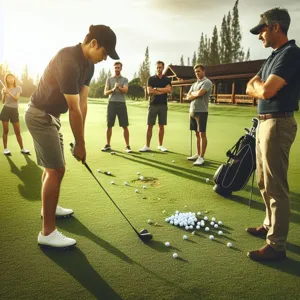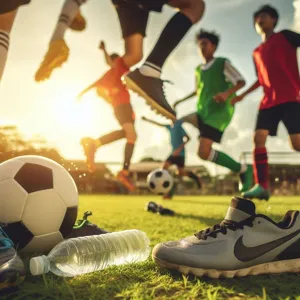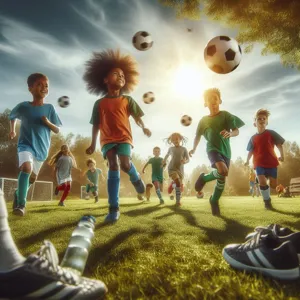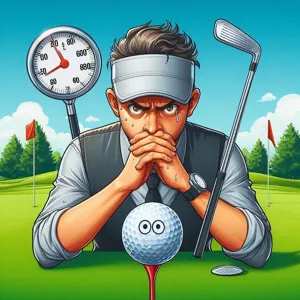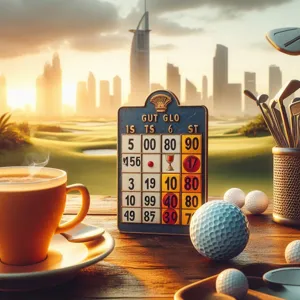As the excitement builds and the adrenaline starts to flow, game day becomes the ultimate arena for showcasing your hard work and dedication.
Whether you’re a seasoned player or a passionate amateur, the key to unlocking your best basketball performance lies in thorough preparation both on and off the court. In this blog post, we’ll delve into top strategies that will elevate your game day experience, ensuring that you step onto the hardwood feeling confident and ready to dominate. From the importance of proper nutrition and hydration to the mental techniques that can sharpen your focus, we’ll cover essential tips that help you harness your skills and maximize your potential. Get ready to take your game to the next level and leave it all on the court—because when the whistle blows, you want to be game day ready!
1. Understanding the Importance of Game Day Preparation

Understanding the importance of game day preparation is paramount for any athlete aspiring to enhance their performance on the court. Preparation goes beyond mere physical conditioning; it encompasses mental readiness, strategic planning, and even nutrition. The hours, days, and weeks leading up to game day are crucial for setting the stage for success, allowing players to translate months of hard work into a high-stakes performance.
When athletes approach game day fully prepared, they cultivate a sense of confidence that can significantly impact their gameplay. This confidence stems from knowing that they have practiced diligently, honed their skills, and analyzed their opponents. A well-structured preparation routine can help players familiarize themselves with game scenarios, anticipate challenges, and devise strategies to overcome them. This mental rehearsal not only sharpens their focus but also minimizes anxiety, allowing them to enter the game with a clear mind and a winning attitude.
Moreover, physical preparation is equally essential. It involves not just the final touches on skill work but also taking care of one’s body through proper nutrition, hydration, and rest. Fueling the body with the right nutrients provides the energy needed for peak performance, while adequate rest ensures that muscles are primed and ready to execute quick movements and sharp plays. A comprehensive pre-game meal, rich in carbohydrates and proteins, can fuel an athlete’s energy reserves, while hydration plays a critical role in maintaining stamina throughout the game.
Additionally, understanding the importance of mental preparation cannot be overlooked. Visualization techniques, where athletes envision themselves excelling on the court, can boost confidence and help solidify muscle memory. Setting specific goals for the game can also give players a clear focus, whether it’s maintaining a certain shooting percentage, contributing defensively, or executing plays effectively.
In essence, game day preparation is an intricate tapestry woven from physical readiness, mental fortitude, and nutritional strategy. By recognizing the significance of this preparation and committing to a comprehensive routine, athletes set themselves up for their best performance, ready to leave everything on the court and seize victory.
2. Setting Clear Goals for the Game
Setting clear goals for the game is a fundamental step in preparing for your best basketball performance. Goals act as a roadmap, guiding your efforts and decisions from practice drills to game day strategies. Before you lace up your sneakers and step onto the court, take a moment to visualize what you want to achieve. Are you aiming for a specific number of points, assists, or rebounds? Perhaps you want to focus on reducing turnovers or improving your defensive presence.
Whatever your objectives, ensure they are SMART: Specific, Measurable, Achievable, Relevant, and Time-bound. For instance, instead of simply stating, “I want to play better,” refine that goal to something like, “I will score at least ten points and grab five rebounds by the end of the first half.” This level of clarity not only provides direction but also instills a sense of accountability.
Share your goals with your teammates and coaches; this fosters a collective mindset and allows everyone to support one another in achieving their individual and group objectives. As you progress through warm-ups and drills, keep your goals at the forefront of your mind. This focus will help you maintain your intensity and motivation throughout the game.
By setting clear, actionable goals, you create a framework that can enhance your performance, boost your confidence, and ultimately lead to a more fulfilling game day experience. Remember, every successful play starts with a well-defined intention, so take the time to establish your goals and watch your performance soar as a result.
3. Creating a Pre-Game Routine

A well-crafted pre-game routine can be the difference between a mediocre performance and a standout game. It’s a time-honored tradition among athletes to establish rituals that help them get into the right mindset and physically prepare their bodies for the challenges ahead. The beauty of a pre-game routine lies in its ability to instill confidence and focus, transforming nervous energy into adrenaline-fueled excitement.
Start by setting the stage well before tip-off. Begin your day with a nutritious breakfast that fuels your body without weighing you down. Think whole grains, lean proteins, and plenty of hydration. As the hours tick down to game time, engage in light stretching or yoga to keep your muscles limber and your mind clear.
Next, consider incorporating a warm-up sequence that feels right for you. This could include dynamic stretches, dribbling drills, or shooting practice. The key is to engage in movements that mimic the game’s demands, gradually increasing the intensity as you get closer to game time. Not only does this prepare your body, but it also helps you hone your skills and build muscle memory.
Mental preparation is equally crucial. Visualization techniques can be incredibly effective; find a quiet space where you can close your eyes and imagine yourself on the court, executing plays flawlessly and sinking those three-pointers. This mental rehearsal can boost your confidence and help alleviate pre-game jitters.
Finally, don’t underestimate the power of music. Create a playlist that pumps you up and gets you in the zone. Whether it’s upbeat tracks that get your heart racing or motivational anthems that inspire greatness, music can elevate your mood and energy levels, setting a powerful tone for the game ahead.
By establishing a consistent pre-game routine that incorporates physical, mental, and emotional elements, you’ll not only prepare yourself for peak performance but also create a sense of familiarity and comfort that can help you shine when it matters most. Embrace the process and watch as your game-day readiness transforms your performance on the court.
4. Nutrition Tips for Optimal Performance
When it comes to basketball, your performance on the court is heavily influenced by what you put on your plate. Nutrition plays a vital role in your energy levels, endurance, and overall agility during a game. To ensure you’re game day ready, it’s essential to fuel your body with the right nutrients in the days leading up to the match as well as on the day itself.
Start by focusing on a balanced diet rich in carbohydrates, proteins, and healthy fats. Carbohydrates are your body’s primary source of energy, so loading up on whole grains, fruits, and vegetables is crucial. Think pasta, brown rice, quinoa, and a colorful array of veggies to provide the sustained energy you need for those intense game moments.
Don’t forget about protein! Incorporating lean meats, fish, eggs, and plant-based proteins will help repair and build muscle, ensuring your body is strong and resilient. A protein-rich meal after practice can accelerate recovery and enhance muscle growth, enabling you to hit the court feeling fresh.
Hydration is equally important. Dehydration can severely affect your performance, leading to fatigue and cramping. Aim to drink plenty of water in the days leading up to the game, and consider electrolyte-rich drinks if you’re sweating heavily during practice sessions. On game day, it’s crucial to hydrate at regular intervals, starting as early as breakfast.
Finally, timing matters! A well-timed pre-game meal can make a significant difference. Ideally, consume a balanced meal about three hours before tip-off. This should include complex carbohydrates, moderate protein, and a small amount of healthy fat. If you’re in a pinch closer to game time, a light snack—like a banana or an energy bar—30 to 60 minutes prior can help keep your energy levels up without weighing you down.
By paying attention to your nutrition, you set the stage for peak performance, ensuring that when the whistle blows, you’ll be ready to bring your A-game!
5. Hydration: The Key to Staying Energized
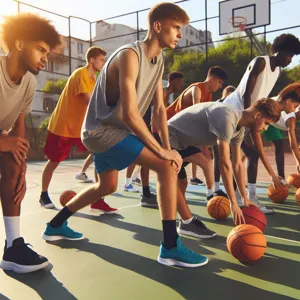
Hydration is often an overlooked element in an athlete’s preparation routine, yet it plays a crucial role in optimizing performance on the basketball court. As you gear up for game day, ensuring that your body is properly hydrated can make all the difference between an average outing and a standout performance.
Basketball is an intense sport that demands high levels of endurance and agility, and without adequate hydration, you risk feeling sluggish, fatigued, or even cramping mid-game. Water is essential for regulating body temperature, lubricating joints, and transporting nutrients to your muscles—all vital functions for peak athletic performance.
In the days leading up to your game, aim to consume plenty of water throughout the day. While the classic advice of drinking eight 8-ounce glasses is a good starting point, individual needs can vary based on your size, activity level, and the climate you’re in. A helpful tip is to monitor the color of your urine; pale yellow means you’re well-hydrated, while dark yellow indicates that it’s time to drink more fluids.
On game day, don’t just wait until the tip-off to start hydrating. Begin sipping water at least a few hours before the game and consider incorporating electrolyte-rich beverages to replenish lost minerals. Sports drinks can be beneficial, especially if you’re playing in hot conditions or expect to be on the court for an extended period.
During breaks in the game, take advantage of opportunities to hydrate. A well-timed drink of water or sports drink can help you maintain energy levels and keep your mind sharp. Remember, feeling your best starts with being hydrated, so make it a priority in your pre-game routine. With the right hydration strategy, you’ll feel energized and ready to take on the competition, leaving it all on the court.
6. Mental Preparation: Visualization Techniques
Mental Preparation: Visualization Techniques
When it comes to basketball, the mind is just as crucial as the body. While physical training lays the groundwork for performance, mental preparation often distinguishes great players from the rest. One of the most powerful tools in your psychological arsenal is visualization techniques.
Visualization involves creating vivid mental images of yourself executing skills and strategies successfully. Before game day, take a few quiet moments to close your eyes and picture every aspect of the game. Imagine yourself dribbling down the court, feeling the smoothness of the basketball in your hands as you weave through defenders. Visualize the sound of the crowd erupting as you sink a perfect three-pointer or make a game-winning assist. The more detailed and immersive your visualization, the more effective it will be.
Studies show that mental imagery can enhance performance by reinforcing muscle memory and boosting confidence. As you visualize, focus on the emotions associated with your success—feel the adrenaline, the joy, and the satisfaction of executing your plays flawlessly. This not only prepares your mind for the challenges ahead but also helps alleviate pre-game anxiety.
Incorporate visualization into your daily routine, especially in the days leading up to the big game. Spend five to ten minutes each day engaging in this mental rehearsal, whether you’re at home, in your car, or even while warming up. By embedding these positive images in your mind, you’ll build a mental blueprint that guides you through the highs and lows of competition.
Remember, basketball is as much a mental game as it is a physical one. By harnessing the power of visualization, you’ll not only enhance your performance but also cultivate a winning mindset that can carry you to victory on game day.
7. Physical Warm-Up: Exercises to Get You Ready
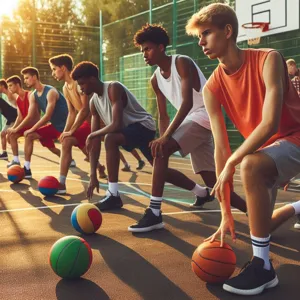
A proper physical warm-up is essential for ensuring that your body is primed for the demands of basketball. Engaging in a dynamic warm-up routine not only increases blood flow to your muscles but also enhances flexibility and coordination, helping to prevent injuries. Start with light jogging or skipping for 5-10 minutes to elevate your heart rate and get your blood circulating.
Next, incorporate dynamic stretches that mimic the movements you’ll perform on the court. High knees and butt kicks are excellent for warming up the hip flexors and hamstrings, while leg swings—both front-to-back and side-to-side—help loosen your hip joints and improve range of motion. Add in some lunges with a twist to engage your core and promote balance, and don’t forget to include arm circles and shoulder rolls to warm up your upper body.
Once your muscles are warmed up, transition into sport-specific drills. Dribbling the ball while moving through various patterns allows you to hone your ball-handling skills while further elevating your heart rate. Consider adding a few quick sprints or defensive slides to simulate game conditions and enhance your agility.
Lastly, cap off your warm-up with a few practice shots. This not only gets your shooting mechanics in sync but also helps to build your confidence as you step onto the court. By dedicating this time to a comprehensive physical warm-up, you’ll set yourself up for peak performance, ready to tackle the game ahead with energy and focus. Remember, a well-prepared athlete is a successful athlete!
8. Reviewing Game Tactics and Strategies
Reviewing game tactics and strategies is a crucial step in ensuring you’re fully prepared for optimal performance on the court. Whether you’re a seasoned player or a newcomer, taking the time to dissect your game plan can make all the difference in high-pressure moments.
Start by gathering your team for a focused strategy session. Utilize video footage from previous games to analyze both your strengths and areas needing improvement. Look for patterns in your opponents’ plays, identifying their weaknesses that you can exploit. Discussing these insights collectively not only boosts team cohesion but also builds a sense of shared purpose and accountability.
Consider breaking down the game into specific scenarios. How will you handle a fast break? What’s your strategy for defensive rebounds? By simulating these situations during practice, you can enhance your decision-making skills and improve your reaction time. Encourage open dialogue among teammates; brainstorming different approaches fosters creativity and adaptability.
Additionally, be sure to revisit your individual roles within the team. Understanding your specific responsibilities allows you to play to your strengths and support your teammates effectively. Whether you’re the sharpshooter, playmaker, or defensive anchor, clarifying your contributions helps streamline the team’s overall game strategy.
Finally, don’t underestimate the power of visualization. Take a few moments to mentally rehearse the tactics and strategies you’ve discussed. Picture yourself executing plays flawlessly, making quick decisions, and communicating effectively with your teammates. This mental preparation can boost your confidence and ensure that you’re not only ready physically but also mentally when game time arrives.
By systematically reviewing your game tactics and strategies, you’ll step onto the court with a clear mindset, ready to face any challenge that comes your way. Embrace this crucial preparation step, and watch as your performance soars to new heights.
9. The Role of Team Chemistry on Game Day
Team chemistry is one of the most critical, yet often overlooked, components of a successful basketball performance on game day. It’s the invisible thread that binds players together, transcending mere skill and strategy. When teammates understand and trust each other, they can anticipate each other’s moves, leading to fluid plays and seamless communication on the court.
To cultivate this vital chemistry, teams should prioritize building relationships beyond just practice sessions. Team bonding activities, whether through casual hangouts or structured team-building exercises, can significantly enhance interpersonal dynamics. When players feel comfortable with one another, they’re more likely to communicate openly during games, sharing insights and motivating one another in high-pressure situations.
On game day, the importance of this chemistry becomes evident. A team that has honed its synergy will display an intuitive understanding of each other’s strengths and weaknesses, allowing for quicker decision-making and better execution of strategies. For instance, a player with a hot hand can rely on their teammates to create space and set screens, while the rest of the team can confidently anticipate the best passing lanes. This level of collective intuition can turn a good game into a great one.
Moreover, a strong sense of camaraderie fosters resilience. When faced with adversity—be it a tough opponent or an unexpected deficit—teams that enjoy positive chemistry are more likely to rally together, drawing on their mutual support to push through challenges. The shared experiences of victories and setbacks forge a bond that can be crucial in clutch moments.
As you prepare for your next game, remember that the effort you invest in nurturing team chemistry can pay off in leaps and bounds. Practice not just plays, but also the connections that make those plays possible. The result? A cohesive unit that doesn’t just play together but thrives together, making your game day experience not just about the scoreboard, but about the shared journey of teamwork.
10. How to Manage Pre-Game Anxiety
Game day is a whirlwind of emotions, and managing pre-game anxiety is crucial to ensuring you perform at your best. It’s perfectly natural to feel a surge of nerves before stepping onto the court; after all, the thrill of competition comes with its fair share of pressure. However, transforming that anxiety into a source of motivation can make all the difference in your performance.
Start by embracing your feelings of anxiety rather than shying away from them. Recognize that these sensations are your body’s way of preparing you for action. Take a moment to breathe deeply—inhale through your nose for a count of four, hold for four, and exhale through your mouth for four. This simple breathing technique helps calm your nervous system and refocuses your mind on the game ahead.
Visualization is another powerful tool. Spend a few minutes imagining yourself playing at peak performance. Picture yourself making perfect shots, executing plays flawlessly, and celebrating your success with teammates. This mental rehearsal not only boosts confidence but also helps your brain become familiar with the scenarios you may face during the game.
Establishing a pre-game routine can also foster a sense of control in the lead-up to the game. Whether it’s listening to a specific playlist, going through drills, or engaging in light stretches, having a ritual can ground you and eliminate distractions. This routine signals to your body that it’s time to shift into game mode.
Finally, don’t underestimate the power of positive self-talk. Replace negative thoughts with affirmations that reinforce your skills and preparation. Remind yourself of the hard work you’ve put in, the practices you’ve committed to, and the support of your teammates. By cultivating a positive mindset, you can channel your pre-game anxiety into focused energy that fuels your performance on the court.
By implementing these strategies, you can effectively manage pre-game anxiety, allowing you to step onto the court with confidence and clarity, ready to give it your all. Remember, it’s not just about how you handle the pressure but how you use it to elevate your game.
11. Equipment Check: Ensuring All Gear is Ready
Before stepping onto the court, one of the most crucial yet often overlooked aspects of preparation is the equipment check. Ensuring that all your gear is ready not only enhances your performance but also boosts your confidence as you gear up for game day. Start by meticulously inspecting each item in your arsenal, from your basketball shoes to your team jersey.
Begin with your footwear; a good pair of basketball shoes can make a world of difference. Check the soles for adequate grip and ensure that they are free from any debris that could hinder your movement. Remember, comfort is key, so make sure they’re well-fitted, providing both support and flexibility. If you notice any wear and tear, consider replacing them to prevent injury.
Next, turn your attention to your clothing. Check your jersey for any tears or loose threads, as these can be distracting during play. Make sure your shorts are functional and comfortable, allowing for a full range of motion while you make those fast breaks down the court. Additionally, don’t forget to pack any undergarments that provide moisture-wicking properties to keep you dry and focused.
Accessories play a significant role as well. If you wear compression sleeves, knee pads, or ankle braces, make sure they’re in good condition and fit properly. Test them out before game day to ensure they won’t restrict your movement. And let’s not forget about your basketball itself; give it a proper inflation check and make sure it’s the right size for your league.
Lastly, consider bringing along some essential extras. A water bottle filled with your favorite hydration drink can keep you energized, while a towel for wiping sweat will help you maintain grip and focus during the game. By taking the time to conduct a thorough equipment check, you’re setting yourself up for success. A well-prepared athlete is a confident athlete, ready to take on any challenge that comes their way on game day!
12. Importance of Rest and Sleep Before Game Day
As the excitement of game day approaches, the adrenaline may start to kick in, tempting you to push through extra practice sessions or late-night strategy discussions. However, one of the most crucial elements of top athletic performance is often overlooked: rest and sleep. The significance of a good night’s sleep before the big game cannot be overstated. It’s during those precious hours of slumber that your body repairs itself, your muscles recover, and your mind solidifies the strategies you’ve practiced.
Sleep plays a vital role in cognitive functions, such as focus, reaction time, and decision-making – all of which are fundamental to your performance on the court. Research shows that athletes who prioritize sleep exhibit improved physical stamina and greater resilience against fatigue, allowing them to push through those final minutes when the game is on the line.
Moreover, quality rest aids in muscle recovery, reducing the risk of injuries and enhancing your strength and agility. Aim for at least 7-9 hours of sleep the night before the game, ensuring you wake up refreshed and ready to tackle any challenge that comes your way.
To optimize your sleep, establish a calming pre-game routine: dim the lights, limit screen time, and engage in relaxation techniques such as deep breathing or meditation. Create an environment conducive to sleep—cool, dark, and quiet—to promote uninterrupted rest. Remember, your body is your greatest asset on the court. Treat it with the care it deserves, and you’ll find that when game day arrives, you’ll not only feel physically prepared but mentally sharp, ready to make those crucial plays and lead your team to victory.
13. During the Game: Staying Focused and Adaptable
When the whistle blows and the game begins, the excitement and adrenaline rush are palpable, but maintaining focus and adaptability is crucial for a stellar performance. In the heat of the moment, distractions abound—crowd noise, the pressure of the scoreboard, and the presence of fierce opponents can all impact your ability to stay in the zone. Here are some strategies to help you remain centered and responsive during the game.
First and foremost, mental preparation is key. Before stepping onto the court, take a moment to visualize your game plan. Picture yourself executing plays flawlessly and responding effectively to any challenges. This mental rehearsal can boost your confidence and sharpen your focus when the game commences.
Once the game is underway, use breathing techniques to regain composure during intense moments. A few deep, controlled breaths can ground you and reduce anxiety, helping you to clear your mind and focus on the task at hand. This simple practice allows you to maintain a level head, enhancing your decision-making skills during crucial plays.
Adaptability is equally vital. No game goes exactly as planned, and the ability to pivot in response to unforeseen circumstances can set you apart as a player. Stay observant; if you notice a specific strategy from your opponents that is working, be ready to adjust your game plan on the fly. Communicate with your teammates, and remain open to feedback from your coach. This collaborative approach fosters a dynamic team environment where everyone can contribute to overcoming obstacles.
Finally, embrace the importance of a positive mindset. Basketball is as much a mental game as it is a physical one. When faced with setbacks—an unexpected turnover or a missed shot—shift your focus back to the game and your role within it. Acknowledge mistakes but don’t dwell on them; instead, channel that energy into your next play. By staying focused and adaptable, you not only elevate your own performance but also inspire those around you, creating a resilient team dynamic that can lead to victory.
14. Post-Game Reflection and Recovery Strategies
After the final buzzer sounds and the adrenaline of the game begins to fade, it’s crucial to shift your focus from competition to reflection and recovery. Post-game activities are just as important as any pre-game ritual; they can significantly influence your future performance on the court.
First and foremost, take time for a thorough post-game reflection. Find a quiet space where you can sit down and mentally review the game. Consider what worked well and what didn’t. Were there moments when you felt particularly confident? Or times when you struggled to execute your plays? Jot down your thoughts in a journal, noting specific instances that could inform your training going forward. This practice not only enhances self-awareness but also helps you establish concrete goals for improvement.
Recovery strategies should follow closely behind your reflection. Physical recovery is essential to maintain peak performance and prevent injuries. Start with a proper cool-down routine that includes light jogging or walking to bring your heart rate back to normal, followed by stretching to alleviate muscle tightness. Focus on key muscle groups that were heavily utilized during the game, ensuring you promote flexibility and reduce soreness.
Hydration plays a pivotal role in recovery, so be sure to replenish fluids lost during the game. Drinking water is important, but incorporating electrolytes can also help restore balance to your body. After hydration, consider consuming a nutrient-rich meal or snack within 30 minutes of the game. A mix of proteins and carbohydrates will aid muscle recovery and replenish your energy stores.
Finally, don’t underestimate the importance of mental recovery. Engage in activities that relax your mind and body. Whether it’s meditation, light reading, or spending time with loved ones, these moments of downtime will recharge your mental battery and prepare you for the next challenge on the court.
By implementing these post-game reflection and recovery strategies, you not only prepare yourself better for your next game but also foster a more resilient mindset that will serve you well in every aspect of your basketball journey.
15. Continuous Improvement: Learning from Each Game
Continuous improvement is the cornerstone of any successful athlete’s journey, and in basketball, this principle rings especially true. Every game you play is an opportunity to learn—whether you’ve just secured a hard-fought victory or faced a disappointing defeat. The key to harnessing these experiences lies in self-reflection and analysis.
After each game, take the time to review your performance critically. What were your strengths? Did you excel in your shooting accuracy or defensive plays? Conversely, identify the areas where you struggled. Did you miss crucial free throws, or perhaps your communication with teammates could have been better? By pinpointing specific moments and decisions, you can create a targeted plan for improvement.
Incorporating video analysis into your routine can be particularly beneficial. Recording games allows you to visually assess your movements, decision-making, and overall execution. Watching the footage not only helps you see patterns in your play—such as tendencies to overcommit on defense or hesitate when shooting—but also enables you to track your progress over time. Pair this with feedback from coaches or teammates, and you’ll receive a well-rounded perspective on your performance.
Moreover, remember that continuous improvement isn’t just about individual performance; it extends to teamwork as well. Discussing game strategies and plays with your teammates can foster a deeper understanding of collective strengths and weaknesses. Regular team debriefs can pave the way for stronger chemistry on the court, as you all work towards common goals and learn how to better support each other.
Ultimately, embracing a mindset of continuous improvement means never settling for “good enough.” Each game is a stepping stone, a chance to refine your skills, deepen your knowledge of the game, and enhance your physical and mental resilience. By committing to this ongoing journey, you’ll find yourself not only becoming a better player but also inspiring those around you to strive for excellence. Game day after game day, your dedication to learning and growth will set you apart, making every performance a testament to your relentless pursuit of greatness.
As we wrap up our exploration of the key strategies to prepare for your best basketball performance on game day, remember that success is a blend of physical readiness, mental fortitude, and strategic planning. By incorporating proper nutrition, tailored warm-up routines, and effective mental preparation, you can elevate your game and boost your confidence on the court. Each tip we’ve shared is designed to help you harness your full potential and approach each game with a winning mindset. So, lace up those sneakers, visualize your success, and take these strategies into your next game—you’re now equipped to shine brighter than ever. Let the court be your canvas, and may you paint a masterpiece of athleticism and teamwork every time you play!










